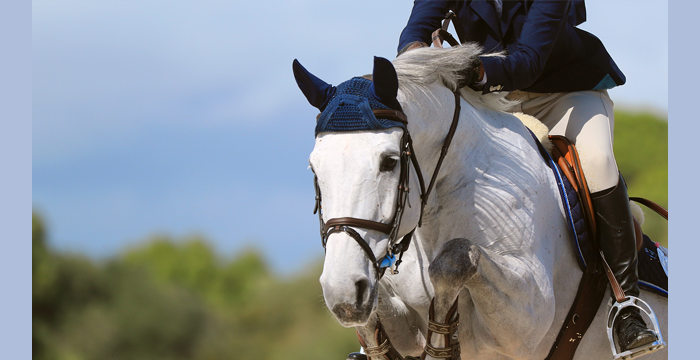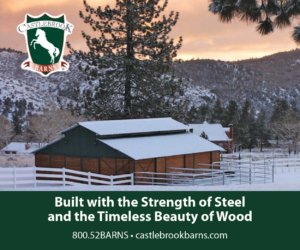What makes a horse a performance horse? The performance activities of horses vary in both duration and intensity. Therefore, what we feed them also needs to vary. In this article, we’ll discuss feeding performance horses by addressing water and energy needs.
Each and every performance horse requires water, energy (calories), protein, vitamins, and minerals. Water is the single most important nutrient. Performance horses must maintain proper hydration to transport materials to and from the cells within the body and to synthesize and repair body tissues.
The amount of water required by a performance horse depends on the amount of water lost from the body and the amount of water utilized for synthesis of protein. For performance horses, water is lost from the body primarily in sweat, urine, and feces. To replace the water lost from the body, performance horses should have free access to fresh, clean water.
Of the remaining nutrients required by performance horses, energy is the dietary factor most influenced by work or exercise performance. Simply stated, the more work a horse performs the more energy (calories) required to fuel that work. Horses derive energy from the feeds they consume. Hay, pasture, grain concentrates, and certain supplements contain chemical energy (calories) that horses can metabolize and use to generate mechanical energy for muscle movement.
Within feed, there are four chemical constituents that are metabolized to produce mechanical energy: starch, fat, protein, and fiber. The main source of starch in a performance horse diet is cereal grain (oats, corn, or barley). There is a restriction to the amount of grain that can be fed to performance horses. If too much grain is fed in a single meal (more than 5 pounds of grain per meal for a 1000-pound horse) the grain will not be properly digested. For this reason, other sources of energy (fat, protein, and fiber) are also incorporated into the horse’s diet.
Fat is commonly added to the diets of performance horses. Liquid vegetable oil (corn and soybean oil), flax, and rice bran are several fat sources commonly utilized as energy sources. Fat is extremely useful because it’s well digested (>90%) by horses. Compared to hay, fat is nearly twice as digestible. The high calorie content of fat is very helpful in fueling the high-energy requirements of many performance horses. Performance horses can easily be adapted so they can be fed up to two cups of vegetable oil per day for a 1000-pound horse. Feeding too much fat without proper adaptation can cause diarrhea until the horse’s digestive system becomes accustomed to the dietary fat. It’s common for performance horse feeds to have between 6 and 12% fat.
The National Research Council (NRC, 2007) estimates the crude protein requirement for mature performance horses at 9-11% depending on work intensity. Protein that is fed in excess of a horses’ requirement can be broken down and utilized for energy. Unfortunately, the use of protein for energy requires the horse to excrete the nitrogen associated with the protein. Excretion of nitrogen requires the horse to drink more water and increases blood ammonia—both situations that are undesirable for performance horses. Thus, feeding excess protein as a source of energy is not a sound nutritional practice.
The most overlooked source of energy for a performance horse is dietary fiber. In fact, for the digestive system to function correctly horses require at least 1.25% of their body weight in hay/pasture per day. Today, in addition to good quality hay and pasture we have so-called super fibers that are safe to feed like hay but have the energy equivalent of oats. Examples of this super fiber are beet pulp and soybean hulls.
In summary, we begin feeding performance horses by providing free access to fresh, clean water. The next step is to provide adequate energy, but how do we determine how much energy they require? Energy is the only dietary factor that you can determine visually in order to know if the diet is adequate. However, you can’t simply look at horses and determine the status of other critical nutrients. Therefore, to provide energy to the performance horse, we begin with feeding good quality forage (pasture/hay) and add additional energy with the use of a combination of starch, fat and super-fibers.
Article by Dr. Stephen Duren, a Performance Horse Nutritional Consultant. Learn more about LMF Feeds at lmffeeds.com.
Published in July 2020 Issue:

The Northwest Horse Source is an independently owned and operated print and online magazine for horse owners and enthusiasts of all breeds and disciplines in the Pacific Northwest. Our contemporary editorial columns are predominantly written by experts in the region, covering the care, training, keeping and enjoyment of horses, with an eye to the specific concerns in our region.





